Digital Camera World Verdict
A hands-free way to carry a camera and a great alternative to a camera bag, this clever belt feels secure and helps transfer weight onto hips.
Pros
- +
Comfortable and secure
- +
Transfers weight to hips
- +
Excellent build quality
Cons
- -
Looks like a ‘bum bag’
- -
Lens bucket needs a lid
Why you can trust Digital Camera World
Hot on the heels of the Cotton Carrier Skout sling-style harness for DSLRs and mirrorless cameras comes the company’s SlingBelt and Bucket System. Now on Kickstarter for $89/£69, it’s designed for carrying a DSLR or mirrorless camera safely along with an extra lens or two.
Cotton Carrier SlingBelt & Bucket: Design & handling
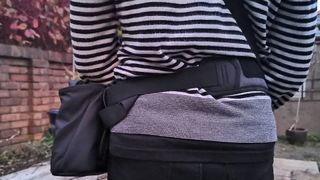
Let’s be honest, the concept of a utility belt for photographers isn’t necessarily going to translate easily across the Atlantic. While ‘fanny packs’ are popular in North America, they’re a virtual no-no in Europe. Still, this one’s much more than the ‘bum bag’ you’ll see around the midriffs of American tourists. A four part package, it comprises a SlingBelt that goes around the waist, a lens bucket for attaching to the belt, a DryBag for first wrapping the lens, and a SlingTether for the camera itself. The concept is simple; instead of taking a camera bag out on a shoot you can store a camera and lens securely on a belt.
Of course, it could also be seen as an additional accessory that allows a photographer to go on a shoot with a smaller camera backpack than they would otherwise need, and with a camera and a spare lens within easy reach.
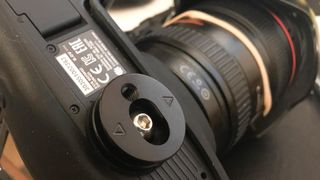
The camera attaches to SlingBelt in the same way at Cotton Carrier Skout. In the package is a flat hub, a circular piece of machined aluminum that attaches – using an Allen key – to the 1/4-inch tripod thread of a camera. It’s got its own 1/4-inch tripod thread on the bottom, so you can still mount a camera on a tripod. Unlike the Skout, which has a small pocket to store the Allen key, there’s no such pocket on the SlingBelt. So you’re going to have to find somewhere to store an Allen key, though in practice there is no massive need to remove the flat hub while you are out on a shoot.
The real engineering genius is the twist-and-lock mechanism on the camera and on the SlingBelt. Positioned on the right hand side of the SlingBelt is a U-shaped clasp that the camera’s smart hub attachment to glide into. With the circular SlingTether around your shoulders and attached to a DSLR, all that’s needed is to place the camera in side-on, then point the lens down to the floor to lock it in place. It works so well. It’s secure, it’s safe, and there’s now no need to take the weight of your camera around your neck or shoulders while out on a shoot.
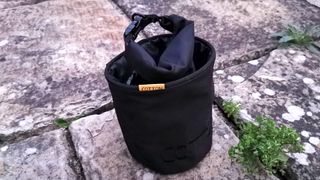
The Lens Bucket System also works well. In the package are two sizes of DryBag to suit large and small lenses. Both of them have clips on each side that fit into clips on the interior of the lens bucket, which itself clips onto the belt using two layers of Velcro. Again. It’s all really secure, and with a DryBag folded over at the top before attaching to the lens bucket, there’s no chance rain can get inside.
Once fixed in place, it’s a cinch to extract a lens while on-the-go, though in practice you don't actually have to take a lens with you at all. If you are happy with the lens on your camera, or you decide to take a camera bag with you in addition to the SlingBelt, the lambs bucket could be used to store a bottle of water, or even a waterproof layer or some food. To that end, it would be nice if the lens bracket had some kind of late to protect whatever it is the user decides to put in it.
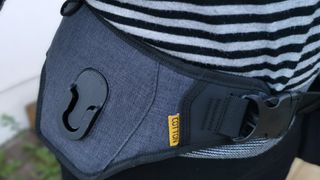
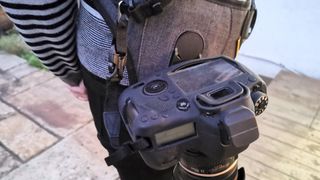
Cotton Carrier SlingBelt & Bucket System: verdict
You could use only the SlingBelt for its ability to support a DSLR; the lens Bucket is optional, and perhaps overkill because there’s no way most photographers are going to go out on a shoot without a camera bag of some kind. So although it’s great for photographers who want to slim down on the kit they’re carrying, it’s probably best seen as an accessory for landscape photographers who want to keep their camera – and a spare lens – with them at all times, but go hands-free.
Read more:
The best camera straps

Jamie has been writing about all aspects of technology for over 14 years, producing content for sites like TechRadar, T3, Forbes, Mashable, MSN, South China Morning Post, and BBC Wildlife, BBC Focus and BBC Sky At Night magazines.
As the editor for www.WhenIsTheNextEclipse.com, he has a wealth of enthusiasm and expertise for all things astrophotography, from capturing the Perseid Meteor Shower, lunar eclipses and ring of fire eclipses, photographing the moon and blood moon and more.
He also brings a great deal of knowledge on action cameras, 360 cameras, AI cameras, camera backpacks, telescopes, gimbals, tripods and all manner of photography equipment.
